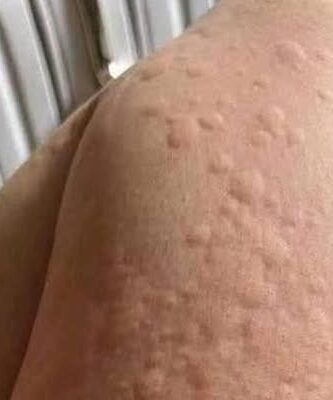
Hives, also known as urticaria, are a frequent skin reaction marked by raised, red, and itchy bumps that can appear anywhere on the body — most often on the face, arms, legs, or torso. Although they can look alarming, these welts usually fade on their own within hours or days. Hives occur when mast cells release histamine, causing nearby blood vessels to leak fluid and create swollen, itchy patches on the skin.

One notable trait of hives is how quickly they appear and disappear — individual welts often vanish within 24 hours without leaving scars, though new ones might develop elsewhere. Alongside itching, some people experience angioedema, a deeper form of swelling that can affect areas like the lips, eyelids, or throat. In severe situations where breathing becomes difficult, this can require urgent medical attention.
Hives are generally categorized by duration. Acute urticaria lasts less than six weeks and often has a clear cause, such as an allergic reaction, infection, or medication. Chronic urticaria, which persists beyond six weeks, is frequently harder to trace and may stem from autoimmune activity. Inducible urticaria is triggered by specific factors like cold temperatures, heat, friction, pressure, or sunlight.
Common triggers for acute outbreaks include food allergies, insect bites, certain drugs, or infections — even emotional stress can worsen flare-ups. Chronic hives, on the other hand, can be more mysterious, with many cases linked to the immune system mistakenly attacking the body’s own mast cells.
Diagnosis usually involves a physical examination and medical history review. Treatment aims to ease symptoms — antihistamines are the first line of defense to block histamine’s effects, while corticosteroids may be prescribed for severe or persistent cases. Avoiding known triggers is also key. Though typically not dangerous, hives can significantly disrupt daily comfort and well-being.



